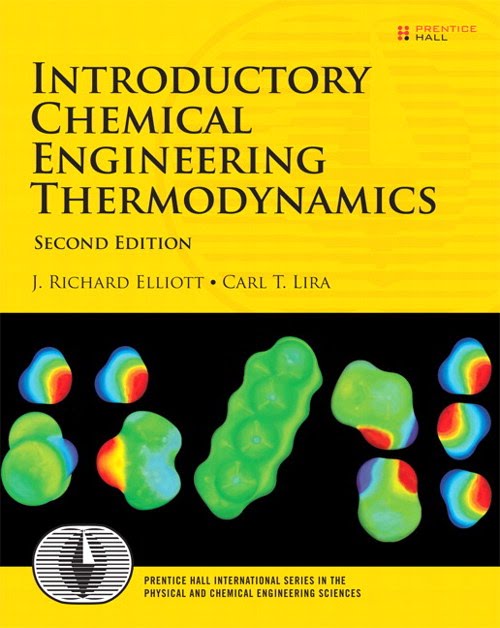
Interactive Simulations Organized by Chapter
Introductory Chemical Engineering Thermodynamics (2nd Ed.)
J.R. Elliott and C.T. Lira
The simulations listed below can help you better understand thermodynamics concepts. Use these simulations to review for exams, or to better understand the content in your textbook.
Chapter 1: Basic Concepts
Ch. 2: The Energy Balance
- Material and Energy Balance in a Reactor with Heat Exchange
- Temperature Changes in an Ideal Gas
- Adiabatic Compression of Pure Gases
- Adiabatic Gas Expansion between Two Tanks
- Adiabatic Evaporation of Water into Vacuum
- Evaporative Cooling of Water
- Energy Balance on Pressurizing a Tank
- Heating Water and Air in a Sealed Container
- Compressed Gas Spray
Ch. 3: Energy Balances for Composite Systems
Ch. 4: Entropy
- Entropy Changes in Mixing Ideal Gases
- Reversible and Irreversible Expansion or Compression
- Adiabatic Compression of Water in Vapor-Liquid Equilibrium (VLE)
- Compressible Flow through a Nozzle/Diffuser
- Throttling High-Pressure Water
- Irreversible and Reversible Temperature Equilibration
- Pressure-Enthalpy Diagram for Water
- Temperature-Entropy Diagram for Water
- Enthalpy-Entropy Diagram for Water
- Compare Compressors/Turbines with Different Efficiencies
- Identify Reversible and Irreversible Expansion and Compression
- Arranging Balls into Boxes
Ch. 5: Thermodynamics of Processes
Ch. 6: Classical Thermodynamics
Ch. 7: Engineering EOS for PVT Properties
Ch. 8: Departure Functions
Ch. 9: Phase Equilibrium in a Pure Fluid
Ch. 10: Introduction to Multicomponent Systems
- Gibbs Phase Rule for One- and Two-Component Systems
- Lever Rule for a Binary Mixture on a P-x-y Diagram
- Adiabatic Flash Drum with Binary Liquid Feed
- T-x-y and x-y Diagrams for Binary VLE in Flash Drum
- P-x-y and T-x-y Diagrams for Vapor-Liquid Equilibrium (VLE)
- Construct a P-x-y Diagram for Vapor-Liquid Equilibrium (VLE)
- Construct a T-x-y Diagram for Vapor-Liquid Equilibrium (VLE)
- Adding a Second Component to a Single-Component Vapor-Liquid Mixture
- Mass Balances for Binary Vapor-Liquid Equilibrium (VLE)
- Vapor Pressure of Binary Solutions
- Adding One Component to a Binary Vapor-Liquid Mixture
- Adding a Second Component to a Fixed-Volume Container
- VLE Diagram for Non-Ideal Mixtures
- Add a Component to a Mixture with an Azeotrope
- Fugacities in a Can of Soda
- Fugacity as a Driving Force for Mass Transfer
- Fugacities in an Ideal Binary Mixture
- Chemical Potential Dependence on Temperature & Pressure
- Visualization of Vapor-Liquid Equilibrium
Ch. 11: An Introduction to Activity Models
Ch. 14: Liquid-Liquid and Solid-Liquid Phase Equilibria
- Effect of Temperature on Partial Miscibility
- Vapor-Liquid-Liquid Equilibrium (VLLE)
- Lever Rule Applied to Phase Diagram for Partially Miscible Liquids
- Partially-Miscible Liquids
- Temperature-Composition Diagram for Immiscible Liquids
- Immiscible Liquids on Pressure-Composition Diagram
- Construct P-x-y Diagram for Immiscible Liquids
- Construct T-x-y Diagram for Immiscible Liquid
- Basic Ternary Phase Diagram
- Ternary Phase Diagram with Phase Envelope
- Ternary Phase Diagram with Alternate Phase Envelope
- Right and Equilateral Triangle Ternary Phase Diagrams
- Solid-Solid-Liquid Equilibrium
